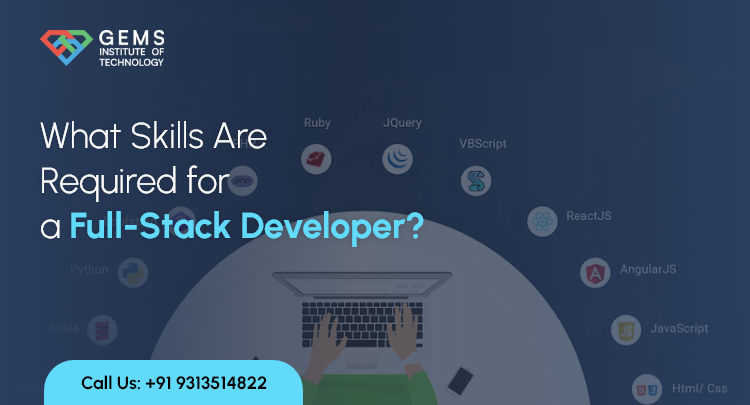What Skills Are Required for a Full-Stack Developer?
In the ever-changing world of web development, the function of full-stack developers is critical and in high demand. These flexible specialists can work on both the front and back ends of web applications, making them invaluable to any technology team. But what precisely is required to become a full-stack developer? Here’s an in-depth look at the abilities required to flourish in this profession.
Front End Skills
User interaction takes place on the front end. It comprises everything that appears on their displays while utilizing a web application. Full Stack Developer Course requires a strong understanding of:
HTML/CSS: These are the foundational components of web design and development. HTML (HyperText Markup Language) structures web content, while CSS (Cascading Style Sheets) styles and designs the layout.
JavaScript: This programming language is a critical component of front-end development. It enhances the interactivity and functionality of web pages. A full-stack developer should be familiar with ES6 features to improve development methods.
Front-End Frameworks: Understanding frameworks like React, Angular, and Vue.js is crucial. These tools enable developers to create complex, resilient, and efficient user interfaces.
Back-End Skills
The back end entails server-side development. It processes a web application’s logic and stores data. Key skills include:
Server-Side Languages: Understanding languages such as Node.js, Python, Ruby, Java, or PHP is necessary. These languages are used to provide the logic for applications.
Database Management: A full-stack developer must understand how to interact with databases. This involves knowledge of relational databases (SQL) such as PostgreSQL and MySQL, as well as NoSQL databases like MongoDB.
APIs (REST/GraphQL): The creation and integration of APIs (Application Programming Interfaces) is critical for communication between a web application’s front and back ends.
Development Tools and Methods
Version Control/Git: Version control solutions (such as Git) make it easier to manage code changes and collaborate with other developers.
Responsive Web Design: Websites must work on a variety of devices and screen sizes. It is vital to understand the fundamentals of responsive design.
Security Practices: Understanding online security best practices is critical for protecting applications from threats such as SQL injection and cross-site scripting.
Other Ability
Understanding of DevOps Practices: Familiarity with continuous integration and deployment (CI/CD) methods, as well as containerization tools such as Docker, can be extremely beneficial.
Soft Skills: Communication, problem-solving, and teamwork are essential for any development endeavor.
Steps to Becoming a Full-Stack Developer
Starting your career as a full-stack developer needs effort and a lot of learning. Start with the fundamentals of HTML, CSS, and JavaScript to build a solid foundation in web development. Gradually introduce more complicated ideas such as back-end programming, database management, and API integration. Building projects is one of the most effective methods to apply what you’ve learned and understand how different technologies interact with one another.
Further, remaining current with the latest development trends and always improving your expertise through tools such as online courses, workshops, and tech meetups is essential in an ever-changing sector.
Conclusion
In conclusion, becoming a full-stack developer is a process of continual learning and practice. It necessitates a combination of technical abilities in front-end and back-end development, a thorough awareness of web development tools and procedures, and the ability to adapt to new technologies. Anyone with effort and the appropriate technique may learn the skills needed to become a successful full-stack developer.







